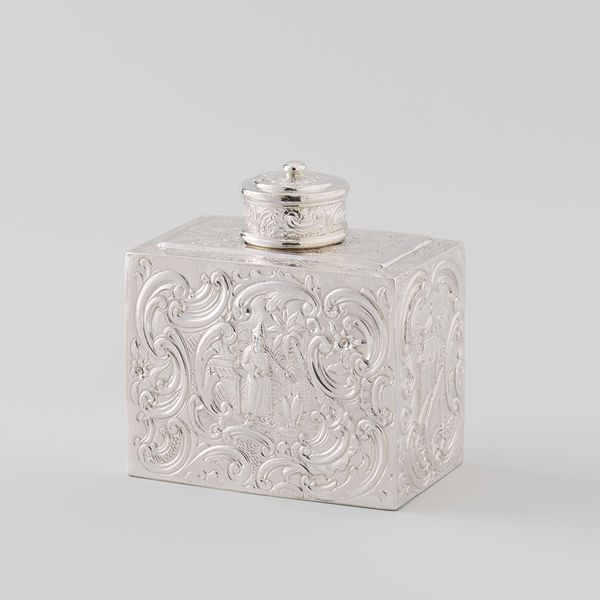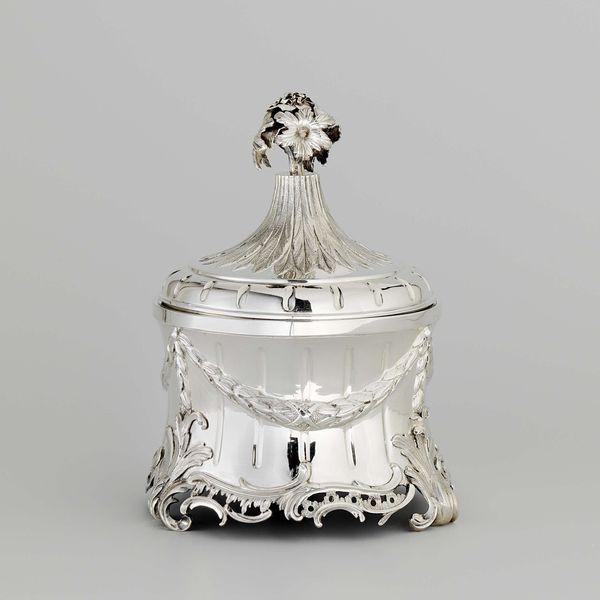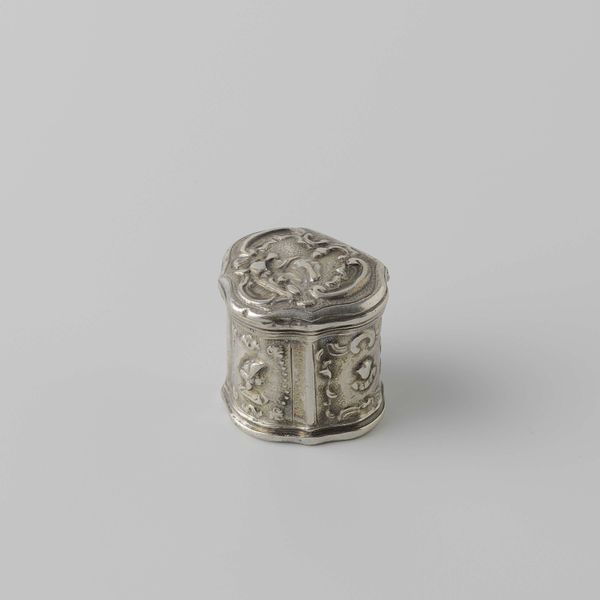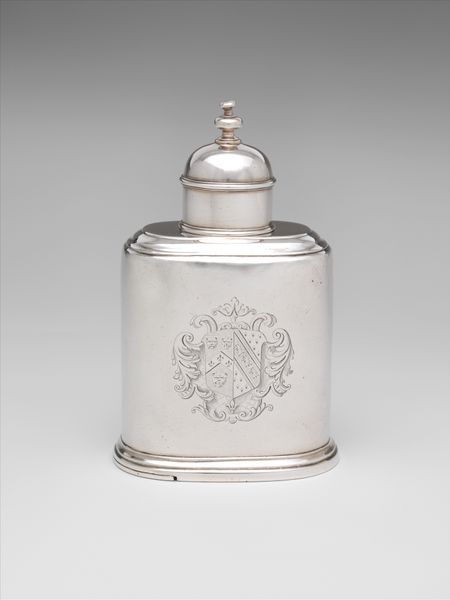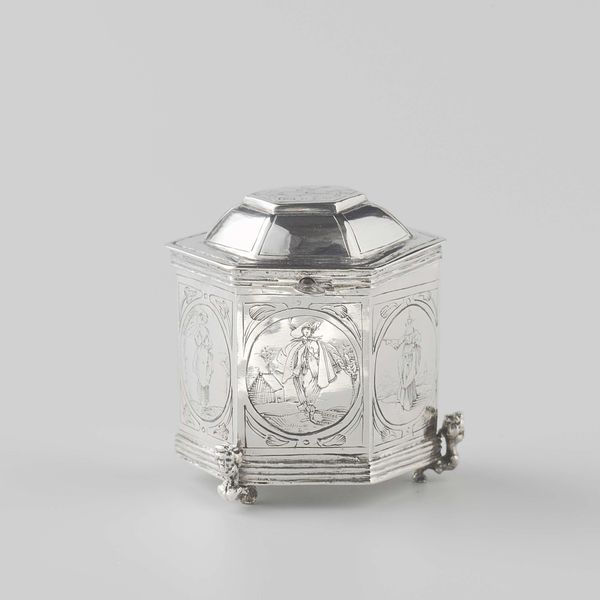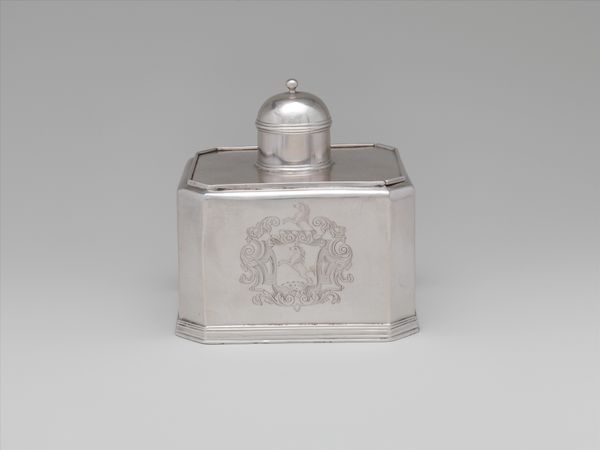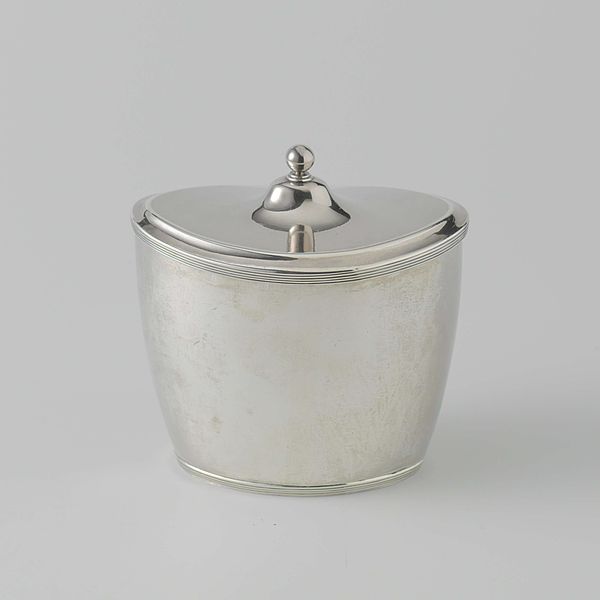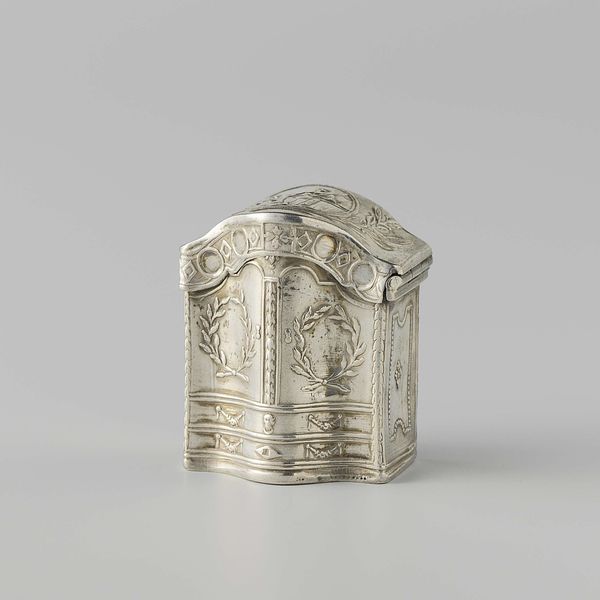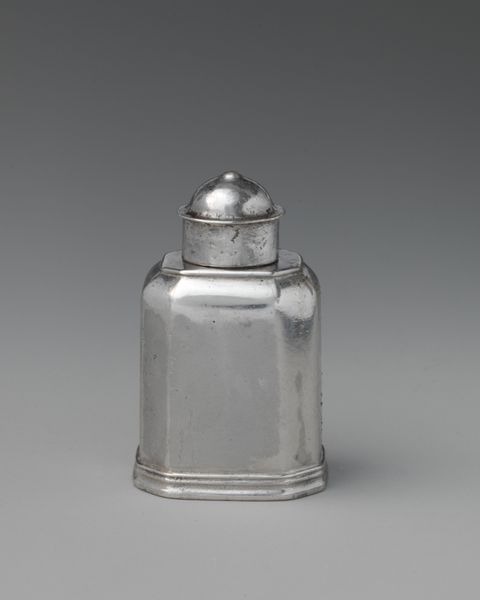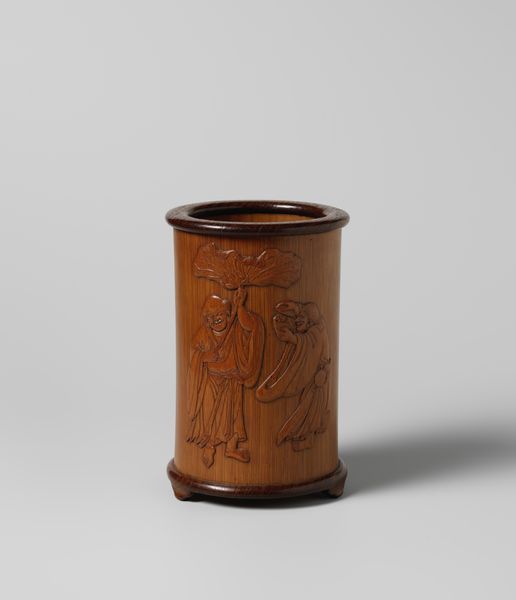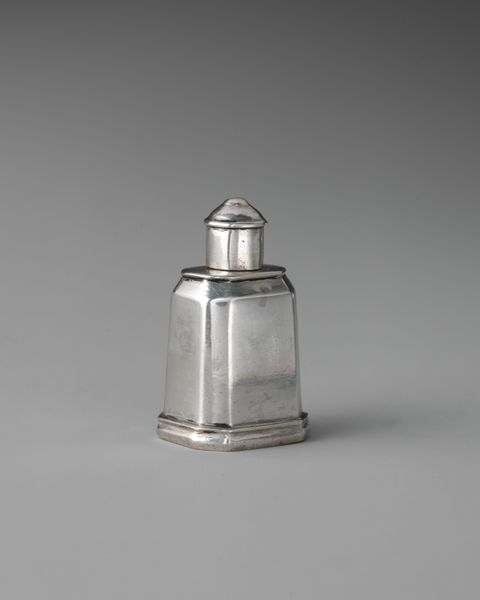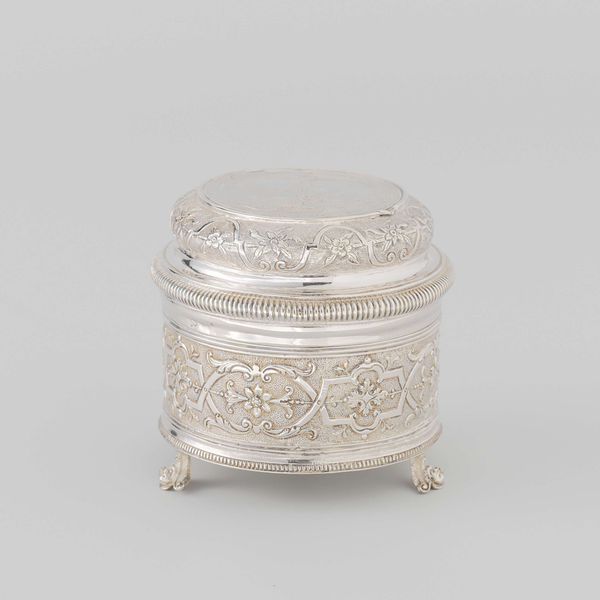
carving, silver, metal, ceramic
#
carving
#
silver
#
metal
#
asian-art
#
ceramic
#
ceramic
#
decorative-art
Dimensions: height 12.2 cm, width 8.8 cm, depth 8.8 cm, weight 237.0 gr
Copyright: Rijks Museum: Open Domain
Editor: Here we have a silver and carved tea caddy, dating back to around 1700, by Eusebius Willem Voet. I'm really drawn to how this small object showcases a kind of idealized vision of Asia. How do you interpret its style? Curator: Indeed. It’s tempting to appreciate this piece purely for its aesthetic qualities. However, it’s crucial to acknowledge that the Asian motifs are likely not accurate representations. The piece participates in a long history of Western artists and artisans borrowing, reinterpreting, and often misrepresenting imagery from Asia. Consider, what does this say about the global exchange of goods and ideas during this period? Editor: That’s fascinating! I hadn’t considered the potential inaccuracies in the depiction. Does that relate to the piece being labeled "decorative-art?" Curator: It's deeply connected. The decorative arts, particularly objects like this tea caddy, often became vehicles for expressing cultural power and shaping public perception. The value wasn't so much in accurate cultural representation but in creating an exotic, marketable commodity for the rising bourgeoisie. How do you think the use of silver factors into this? Editor: Perhaps to increase its perceived value and signal the owner's wealth and refinement? Curator: Precisely! Silver elevates the object beyond mere functionality. Also, don't overlook tea's cultural status and trading relationship to Britain, which makes it such a luxury commodity to encase in a costly container. So, considering all this, how might we reassess our initial understanding of this “decorative” object? Editor: I now understand it as something much more than just visually pleasing! It shows the social and historical currents and power dynamics during the period. I appreciate your insightful perspective. Curator: And I am grateful for your fresh pair of eyes which let us consider new insights into cultural dynamics of past artwork.
Comments
rijksmuseum about 2 years ago
⋮
Even though more and more people began drinking tea at the end of the century, it was still considered a luxury. Hence, the exotic and costly tortoiseshell – against which the silver stands out handsomely – used for this caddy was a fitting choice. The silver inlay decoration is freely conceived and refers only distantly to Asia. Eusebius Voet, or his brother Hendrik, was probably responsible for this design.
Join the conversation
Join millions of artists and users on Artera today and experience the ultimate creative platform.
